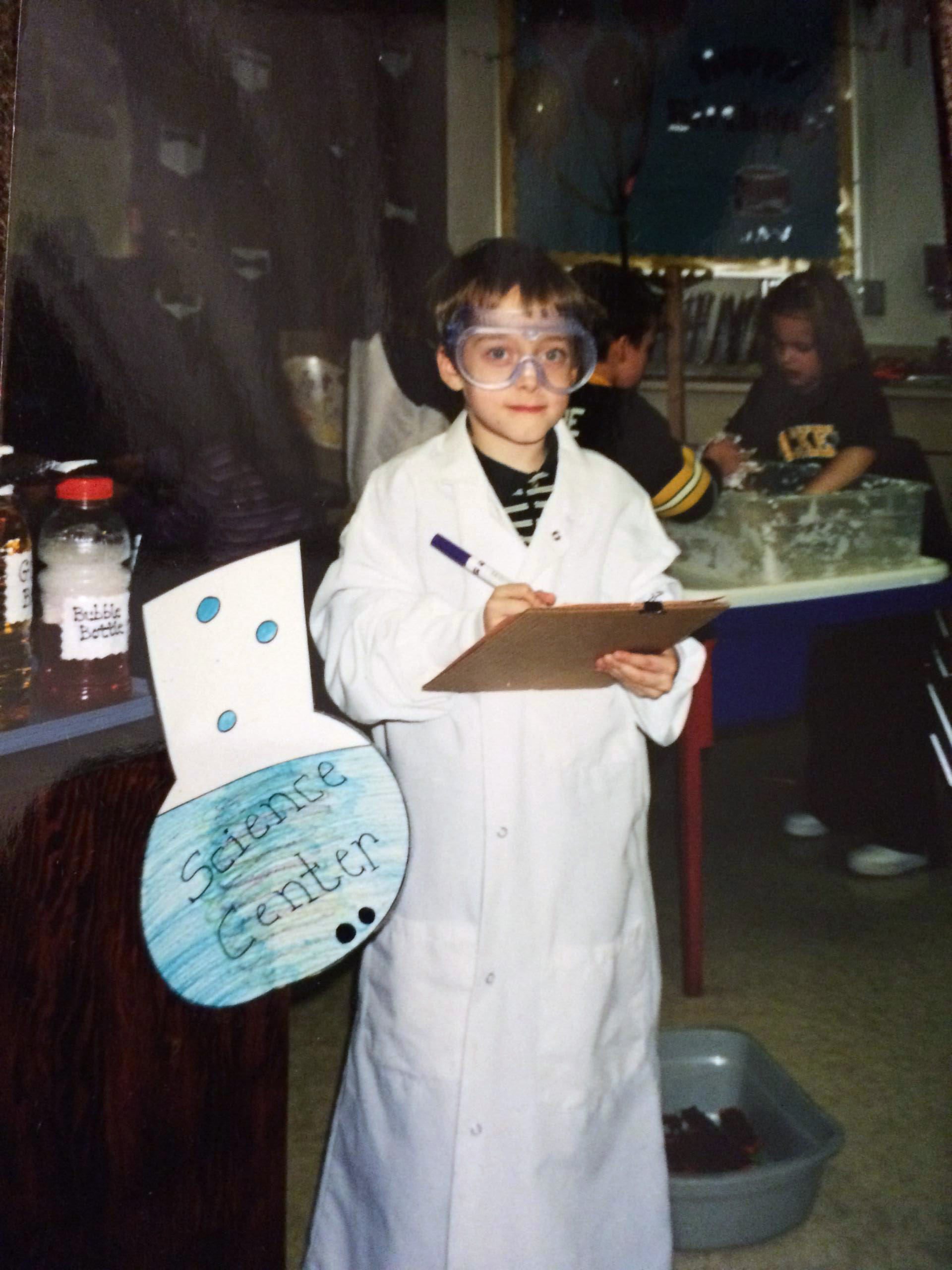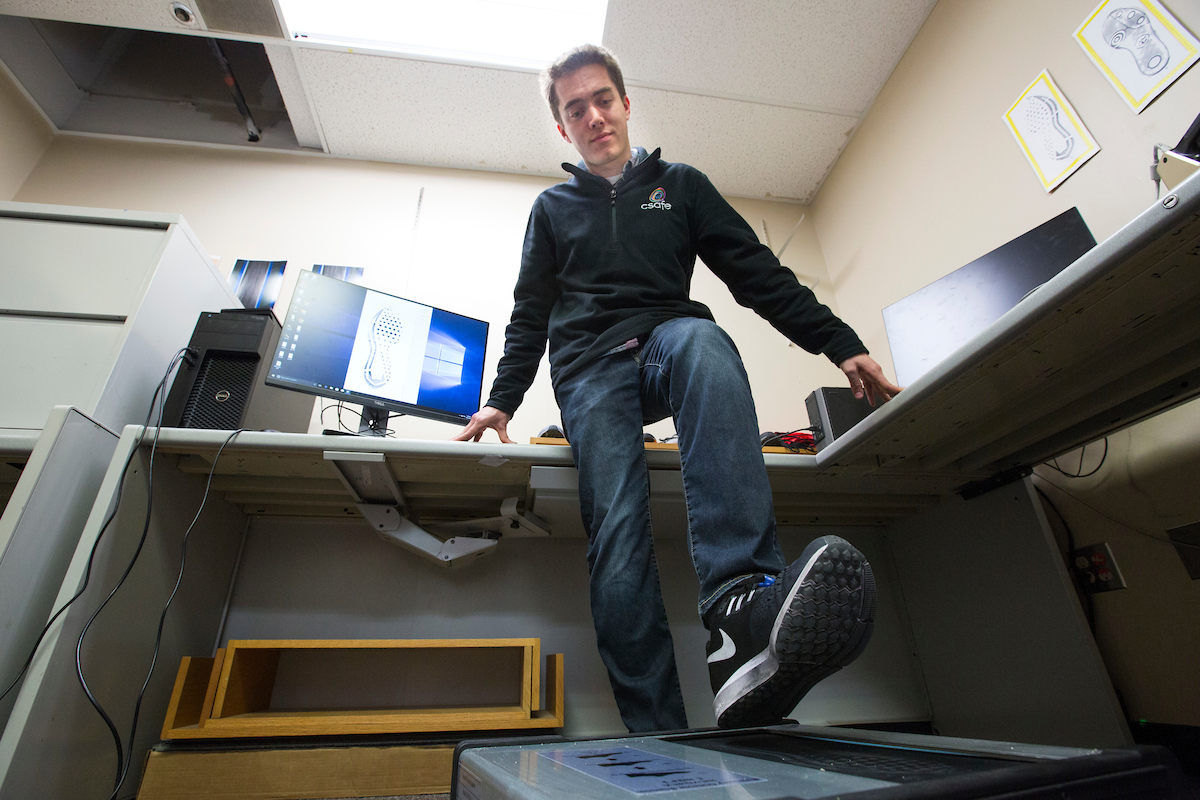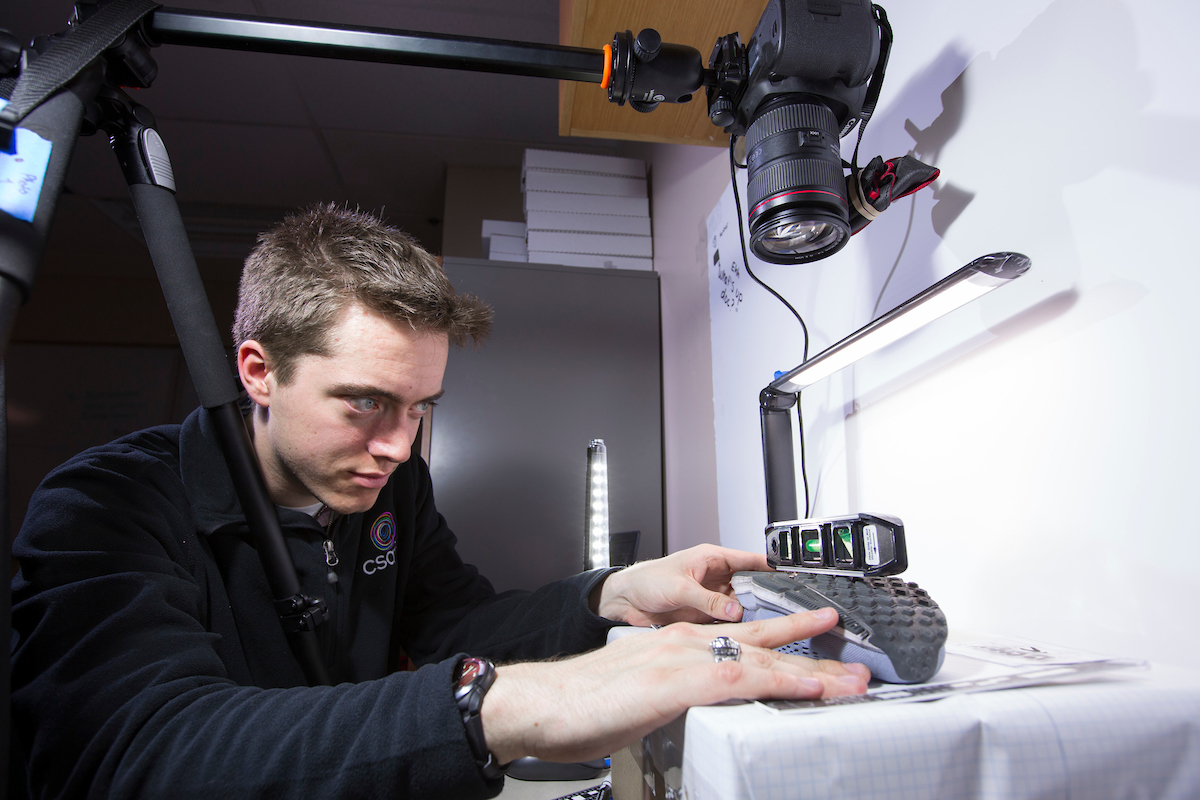When he was in kindergarten, James (Jimmy) Kruse (’18 criminal justice and biology) told his teacher he wanted to be a scientist when he grew up.
“The little science experiments we did when I was in elementary school, like how water evaporates, or what a cell is - I always found really interesting, because it’s something you can’t see, but it’s there,” said Kruse.
Kruse always had an inquisitive mind, nurtured from a young age by watching television shows such as “Sherlock Holmes” and “Scooby-Doo” with his father, and eventually by reading books by Arthur Conan Doyle and Agatha Christie. In fact, Kruse keeps a copy of Christie’s “And Then There Were None” on his desk to this day, and returns to it when he needs a break.

“I always liked mysteries and crime, and trying to figure those types of things out,” Kruse said. “My sophomore year of high school, I took my first biology class and I was fascinated. I found out that there was this thing called forensics — this interesting marriage between crime and science.”
Setting his own path
Kruse visited Iowa State before his senior year of high school. An advisor explained that he could major in biology and pair it with criminal justice, tailoring those classes to create a base of knowledge in forensics.
“I visited three more colleges after that, but Iowa State kept coming to my mind during every conversation with my mother,” Kruse said. “Iowa State mapped out a path and said, ‘We can help you do this.’ So, it was my first choice.”
Since starting his adventure at Iowa State, Kruse found multiple opportunities to gain experience in the forensics field. One of his advisors suggested that he get in touch with Carly Manz, who teaches skeletal biology at Iowa State, about potential projects. Manz had the perfect opportunity — Kruse earned credit for learning while creating a catalog of human skeletal remains for the anthropology program’s human osteology collections.
“It was a very self-directed experience,” Kruse said. “I borrowed a textbook that would tell me key traits to look for in the remains to identify injuries and approximate age and gender. I learned a lot between asking questions and reading the book. My job was to catalog the characteristics on each set of remains so the anthropology program would have documentation for each skeleton.”
“Iowa State mapped out a path and said, ‘We can help you do this.’ So, it was my first choice.”
He sought out his next opportunity after chemistry department faculty and staff arranged a tour of the facilities at the Iowa Division of Criminal Investigation (DCI). During a summer 2016 internship, he archived paper case files and learned about DNA, latent prints, firearms, autopsies and other industry matters through observation of evidence processing.
Forensic footsteps
Kruse learned about Iowa State University’s Center for Statistics and Applications in Forensic Evidence (CSAFE) when his grandmother sent him a newspaper article about the program. He became a CSAFE undergraduate research intern in the summer of 2017.

Alicia Carriquiry, director of CSAFE and Distinguished Professor in the College of Liberal Arts and Sciences and professor of statistics, guides the consortium and strives to develop a strong statistical foundation for forensic practices like fingerprinting, ballistics, and shoeprints.
“That means understanding the sources of error for uncertainty. For instance, if an examiner says, ‘I examined these two fingerprints and I think they match,’ they can be confident the probability they match is 97 percent. There is nothing like that right now except for DNA,” Carriquiry said.
During his internship, Kruse gained a statistical and forensic foundation by working on a shoeprint data logging project to help develop an experimental statistical model for shoe sole identification.
Shoeprints are a relatively new area of research for CSAFE, and an opportunity to break new ground in forensic statistics. The goal is to develop statistical methods to compare shoeprints and ultimately match shoeprints to the wearer.
“Today, shoeprint examiners rely on comparisons of two outsoles by hand. It’s based on opinion,” Carriquiry explained. “We’re putting some science behind it and developing quantitative comparison approaches.”
Kruse got to help with the very beginning stages of this new research during his internship.
“The project was scanning a collection of shoes with a 2-D forensic scanner then developing statistical summaries of those images and using an algorithm created by the team’s post-doctoral mentor,” Kruse explained. “By the end of the summer, we had a model that could match a wearer to a shoe.”
Kruse’s work during the summer was so impressive that CSAFE retained him as a permanent undergraduate researcher after the end of his internship.
“He has initiative, is creative, hard-working and has great attention to detail. He jumps in with everything he has, and is exactly the type of student we want working for CSAFE,” Carriquiry said.
Kruse was given a lot of responsibility on a shoeprint project that includes giving 160 participants a pair of shoes to wear and bring back to the CSAFE lab every five weeks to take measurements. Measurements are taken of the shoes to log wear and tear and correlate with the number of steps walked and wear patterns.
Kruse co-developed the protocol for data collection of the study, and manages data collection and logging efforts. He oversees a team of students working on 2-D imaging, high resolution photography, film print, 3-D imaging and dust print paper.

“I came into CSAFE knowing very little about how statistics fits into forensic science. I just knew it was important. Over the past year, the team at CSAFE helped me to not only understand this connection, but to apply it,” said Kruse.
“Our program manager Stacy Renfro has given me responsibility and pushed me to grow. The principal investigator on my project has helped me understand the way the project works and how to do my job. Sarah Carraher, the communications and outreach coordinator, helped me submit my first abstract to a conference. Dr. Carriquiry is always willing to give advice on school or post-college,” he said.
Kruse’s hard work is not going unnoticed in the forensics field. He submitted an abstract on his work with the shoeprint project that was accepted by the American Academy of Forensic Sciences, and he presented a research poster at their 70th Annual Scientific Meeting in Seattle, Washington.
“It is no small feat,” Carriquiry said. “And he is the only undergraduate student from ISU to go this year.”
Supplementing the classroom experience
Kruse knows his experiences at Iowa State have enhanced what he has learned in the classroom.
“My experiences have complemented my coursework and provided a more applied look at the field I wish to enter. I would not say that internships are more important than coursework, but they provide a way to apply what you have learned and grow,” Kruse said. “If you start internships early, it can give you a new perspective on coursework.”
After making such an impact as an undergraduate, Kruse plans to continue at Iowa State as a graduate student, forging his own path as an interdisciplinary graduate studies student while working at CSAFE. Ultimately, he wants to continue to make a difference and use forensics to find answers. Kruse says his dream job is to be a DNA criminalist.
“I’m hoping I can have some small part in finding the truth, do what I need to do as a scientist - pass that on to detectives - and hopefully help solve crimes and give closure to those involved,” Kruse said.